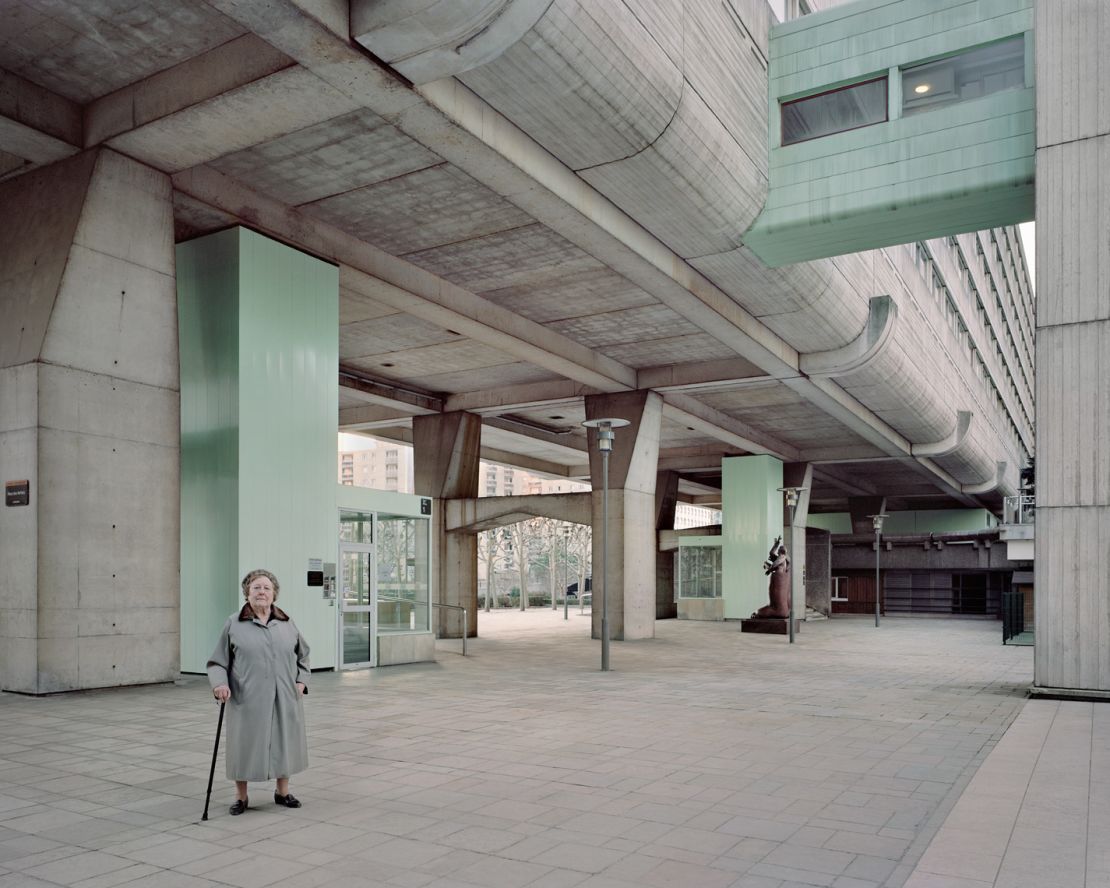Editor’s Note: Laurent Kronental is a photographer from Courbevoie (Hauts-de-Seine) near Paris. His project Souvenir d’un Futur strikingly documents the lives of senior citizens living in the “Grands Ensembles” around Paris, large modernist housing projects built on the edge of the city in the decades after the Second World War to house a growing urban population. He explains how he captured these lives among their colossal surroundings.
Story highlights
Laurent Kronental photographs large modernist housing projects built on the edge of the city in the decades after WWII
This video segment is taken from the CNN Style show
August 19 is World Photo Day
In 2010, as I was walking near my home in Courbevoie, I discovered a tiny little street that had been suspended in time for 50 years – a spot of countryside at the foot of office buildings of the La Défense business district.
The place was surreal. I befriended a couple of elderly people and started to photograph them. Their traditional garden offered a stark contrast with the surrounding skyline of towers, bringing together two different eras, two different living styles.

At this time, I was developing a great attraction to the architecture of the “Grands Ensembles” – the large housing projects that encircle Paris and many major French cities.
The more I photographed these projects, the more I was amazed. The buildings seemed timeless, as if they oscillated between past and present. Two areas next to my home have been inspirational: “Les Damiers” at Courbevoie and “Les Tours Aillaud” (they are also called “Tours Nuages” or “Cité Pablo Picasso”) at Nanterre.
“Souvenir d’un Futur” documents the life of the senior citizens living in the “Grands Ensembles” around Paris.
For the most part erected between the 1950s and the 1980s in an attempt to address the housing crisis, urban migration and the inflow of foreign migrants while meeting modern comfort needs, today they are often stigmatized as dangerous by the media.
They are criticized, they fascinate or bother, but leave no one indifferent.
Their size reminds me of the Colossus. I wanted to create the atmosphere of a parallel world mixing past and future while consciously conveying the impression of towns that would be emptied of their residents. In this magnificent and ghostly world, the structures of our cities would be titanic, gobble the human, the product of our fears and hopes for an organization of the city.
Fascinated by these projects’ ambitious and dated modernistic features, I was moved by the living conditions of these urban veterans who have aged there.
Laurent Kronental's 'Souvenir d'un Futur'
I have always been inspired by seniors and I had this deep feeling to put them at the front stage. I wished to communicate with them, know their life and try to deconstruct this sometimes depreciating image of the old age which arises from our society.
I then said to myself that there was a subject to explore both on the passing of the generations as well as on the impact of time on the architecture and the lives which it tries to harmonize.
I desired to question myself about conditions of their existence, to pour some light on the generation that we forget sometimes. Through this series, I aim to also question the spectator about the forgetting of the old age. At a time when positive attention is focused on youth, these images creates a shock by recalling the existence of these people and by highlighting their problems.
In spite of their melancholic look, these elders, with the strength of their dignified and elegant posture, asserts their fight against the age and their implanting in their housing place.
They are the only ones to fill up the space in this series from which youth has purposely been obliterated. By settling down in these futuristic buildings then, they have re-conquered a space, one that was not originally intended for the old.
Learning
This project allowed me to meet a generation that I did not know in person, as my grandparents disappeared too early.
Certain encounters were very enriching. Among them, I can give the example of José (dressed in a green coat and cap) who is one of the first elderly whom I photographed and with whom I built a truthful relationship. I really saw him as a kind of futuristic sea fisherman with a penetrating gaze, his face expressing an experienced life the origin of which I wanted to reveal.

This project also taught me to explore a territory that I did not know, though close from my home: the Parisian suburb. It gave me a passion for the architecture of large housing estates. It is the unexpected beauty of these structures that attracted me in this anachronistic world.
The title “Souvenir d’un Futur” recalls the melancholy of aging, lost illusions, this concrete universe that was full of promises. This melancholy emerges, for example, in this old man at one of the pictures: he contemplates from a balcony Les Espaces d’Abraxas and seems to meditate on his life. It also comes out in a choice of lights, shadows, colors and the attitude of my subjects.
I made this series to preserve the memory of a generation so that in the future our society and its architects give a social role back to our elders, and thus, the legitimacy and the respect which are owed to them.
I would like that people could discover the large estates landscapes, with as much surprise as I was able to have.
I hope they feel so much fascination and curiosity when they see these building. I want that we wonder about the future of these districts, that we pay attention on their population put aside.
In a fast moving world, I should like to arouse an awareness of duration, intergenerational links, of our social average and long term responsibility as well as of our solidarity. I think that it is also relevant to wonder about the notion of utopia, dream of a better world and to question how this utopia materializes through the realizations of the man. Large estates, records of past utopias are rich in teachings. They have to be kept as essential works of our heritage.
To find out more, watch this month’s episode of the CNN Style show.















































